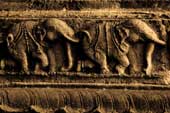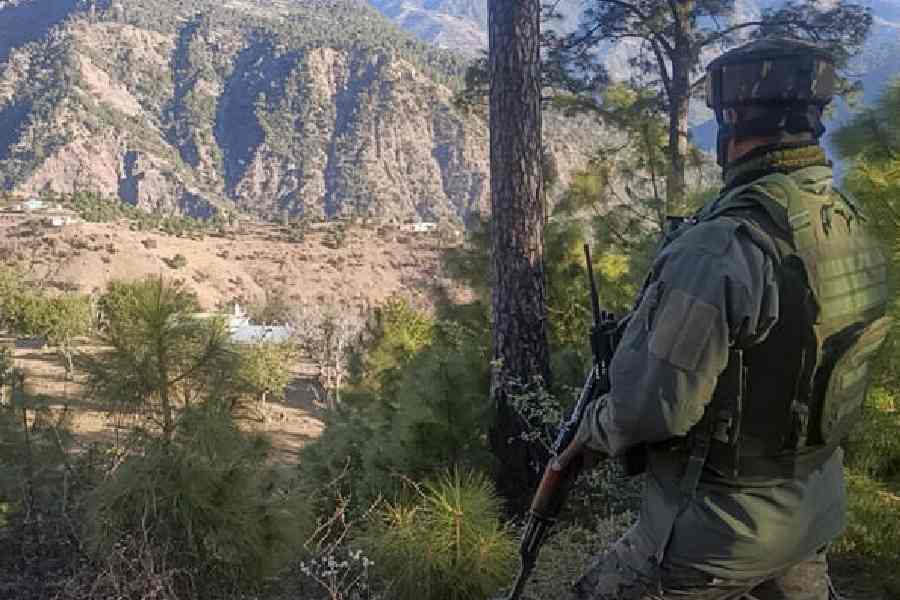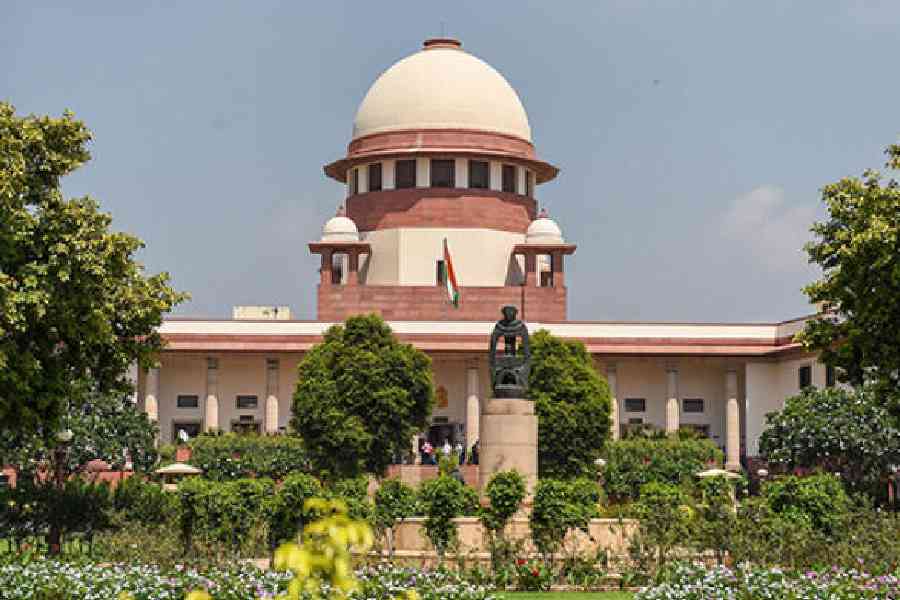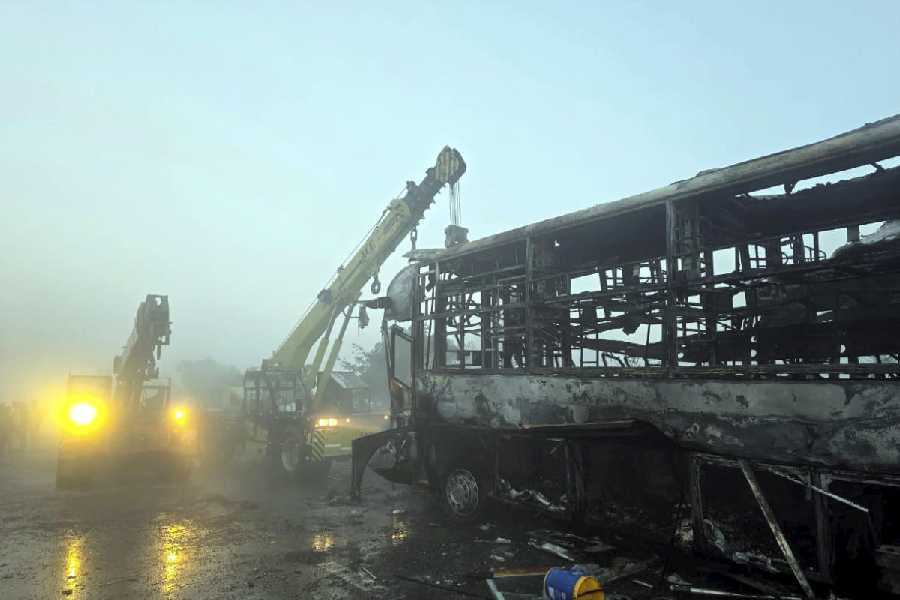 |
 |
 |
 |
| ROCK OF AGES: (From top) A panel from the Hazari Rama temple; a stone chariot at the Vijayavittala temple complex; the way to the Virupaksha temple; noblemen’s quarters in Hampi (Pix: Shabbir Siraj) |
Hukka and Bukka built it seven centuries ago: A serenade in stone that has awed visitors for centuries. Now the stark beauty of the enormous boulders that mark the ruins of the 14th-16th century Vijayanagar empire’s capital city of Hampi in Karnataka may finally get the velvet glove treatment it deserves.
A major exercise has begun to secure the future of this World Heritage Site (WHS), thanks to a master plan draft — an ambitious integrated land, heritage, tourism and civic proposal — notified by the state government in May.
The blueprint looks at issues such as making large parts of the heritage area free of human settlements, relocation of people, ban on construction in the core area, norms of development that would be congruent to the natural and architectural features of Hampi and livelihood of people who depend on tourism at locations seen as living heritage sites.
But can heritage sites attract tourists without literally conceding ground? What does it take for a world heritage site to ensure that it is not overwhelmed by the very forces it seeks to attract? And, in modern times, can you relocate existing population that derives its livelihood from local tourism without the move turning into a battle-front like Nandigram or Narmada?
The experts are working on these questions. But, as Arvind Srivastav, chairman, Hampi World Heritage Area Management Authority (HWHAMA), points out, there are some “serious numbers” at play here: 56 Archaeological Survey of India monuments in the core area of Hampi, 1600-odd state archaeological monuments and a population of 30,000 residing in the core area alone, apart from those in the peripheral area.
The Hampi World Heritage site is located on the banks of the Tungabhadra river in the villages of Hampi, Krishnapur, Venktapur, Kamalapur and Kaddirampur. What sets apart the City of Ruins, as Hampi is often called, is that it is not a single site but spread over a landscape.
Hampi actually caught a lucky break when it was named a World Heritage Site by Unesco’s World Heritage Centre in 1986. At that time, it was not mandatory to have legal protective measures for natural sites to be in place before according it a WHS status. Today only if those procedures are in place will the WHS classification be given. The Hampi master plan, in a sense, is trying to plug all these breaches.
In 2003, HWHAMA was constituted. Though often referred to by its old name, the Hampi Development Authority, HWHAMA is the local planning authority for the heritage area under the proposed master plan. The area would include 29 villages across 236.46 square kilometres.
A key element of the plan is to relocate residents and those living in encroachments within the heritage area four kilometres away in Kamalapur, which would now be the entry point to Hampi. “All the people using the mandappas (temples) will be rehabilitated and no commercial activity will be allowed in there,” says Srivastav. But while residences may not be permitted, those earning their living off tourism such as sellers of soft drinks or souvenirs will be given an opportunity to ply their trade close to the heritage sites.
There is an option in the blueprint to make Hampi a day visitors’ destination with big budget hotels and more modest homestays located outside the heritage area. G. Kumar Naik, the tourism secretary, has a Tourism Vision Plan, a part of which focuses on getting a broader bandwidth of tourists to Hampi. The department is ploughing Rs 5 crore into roads and it has already got 13 international bidders shortlisted for Hampi-related tourism projects in the state.
“The core zone should be like a sacred zone but every development is happening inside the core area, inside existing settlements,” says Nicole Bolomey, programme specialist, culture, Unesco, which monitors the upkeep of the site and is a consultant on the Hampi project. While the tourism department is eager to get big ticket tourists to Hampi, Unesco has stressed against hotels along the river.
Traditional houses and boutique hotels could be considered in the peripheral area. Naik would like to add to this by offering package deals which tie up historical destinations with natural lifestyle packages such as ayurveda spas for inbound tourists.
The two things that most agree on are that the natural beauty of the landscape which lies in magnificent boulders strewn around for miles needs to be safeguarded, and not just the historical monuments. And all relocation has to be done through dialogue and negotiations.
Complete autonomy and single leadership is something that the Hampi development authority lacks — an issue that irks principal revenue secretary S.M. Jaamdar, who headed five cultural rehabilitation projects in Basavaka-lyana, Gulbarga and Bijapur in 1995-2005. Jaamdar minces no words when he says, “The Hampi development authority has no teeth. It has been reduced to a licensing authority. What is needed is a multi-tiered approach by an authority empowered to plan, approach and execute. The body must be totally revamped, or reconstituted with a single authority.”
Bolomey also points out the lack of infrastructure and funds to the Hampi authority at the moment. Till recently, there was just one person in the technical unit who walked or took an autorickshaw to cover 250 square kilometres with 29 villages and one urban settlement. “Hampi needs a proper budget. For a heritage site you need maps, exhibitions, history guides and conservation material. Excellent consultants can be hired if funds are made available,” she says.
Jaamdar says the need of the hour is action. “People who deal with Kannada or culture have neither Kannada nor culture,” he says sharply. “They only talk, they don’t do anything.” Others, however, are determined to see that the HWHAMA gets enough teeth and clout to see the draft plan take shape with its vision intact.
If that happens, it may turn out to be a fitting tribute to Vijayanagar’s long-gone rulers, Hukka and Bukka.










